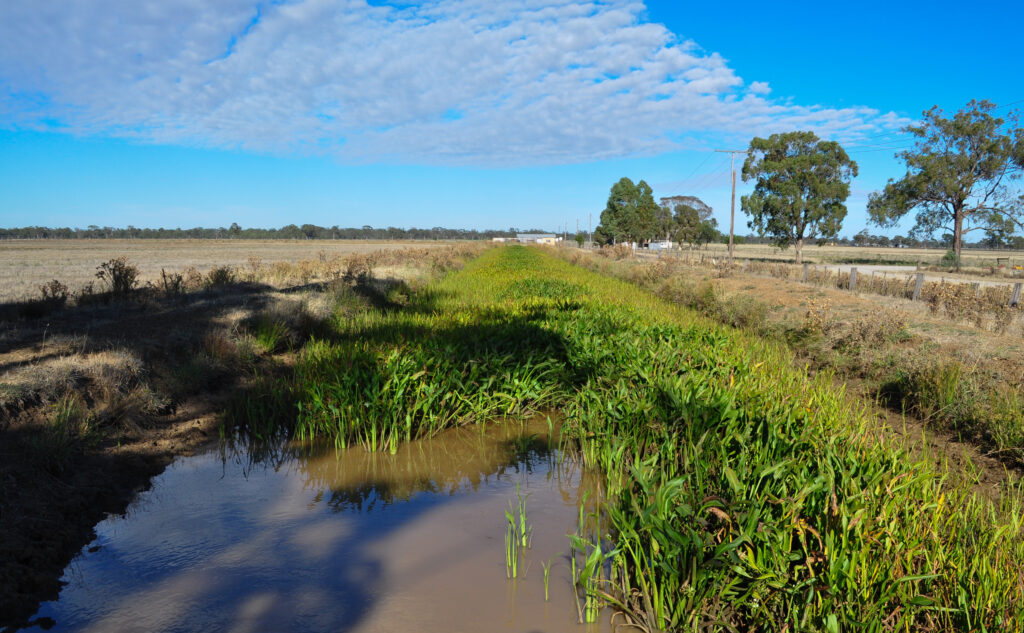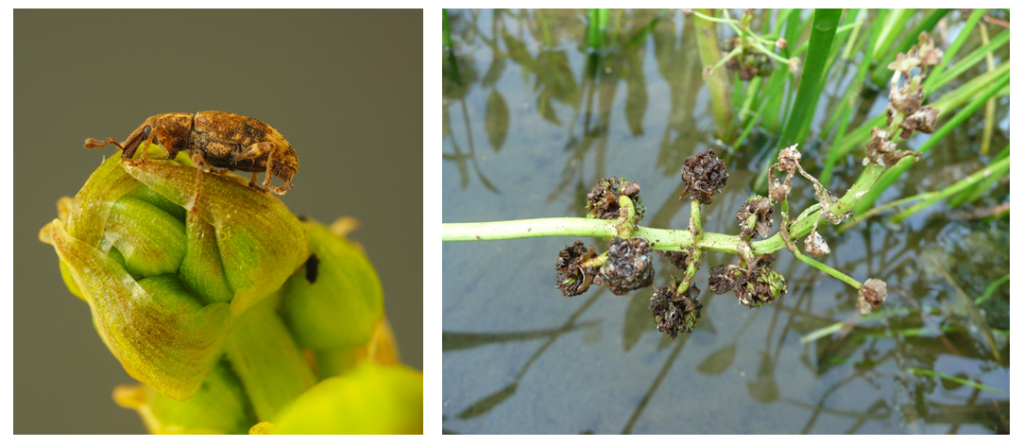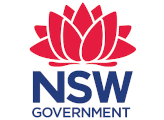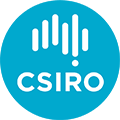Sagittaria
Sagittaria or delta arrowhead (Sagittaria platyphylla), a plant native to North America, is an aggressive aquatic weed in eastern Australia, widely dispersed in southern NSW, particularly in the Murray Irrigation District. It invades natural and constructed waterways, where it forms dense infestations that displace native species, increase sedimentation, and impede water flows.
The NSW Environmental trust is co-investing in a multi-investor independent project on the deployment of a new biocontrol agent for sagittaria, based at Agriculture Victoria Research Division, Department of Jobs, Precincts and Regions, Victoria and in collaboration with NSW Department of Primary Industries.
The project will undertake releases and evaluation of the fruit-feeding weevil Listronotus appendiculatus for biocontrol of sagittaria in southern NSW and northern Victoria. This biocontrol agent was recently approved for release in Australia by the relevant authorities. The first part of the project (April – Sept 2021) will focus efforts on developing an efficient and effective mass rearing protocol for the weevil. Releases and evaluation will occur between October 2021 and June 2023.
Raelene Kwong of Agriculture Victoria Research Division is leading this project.

Infestation of sagittaria (Sagittaria platyphylla) in an irrigation channel (Photo: Raelene Kwong).
Previous research
Systematic surveys for natural enemies of sagittaria (S. platyphylla) in the USA to identify potential biocontrol candidates commenced in 2010. The most common and abundant insect species encountered was the fruit, flower and petiole-feeding weevil, Listronotus appendiculatus which was collected at 74% of sites. Two further weevils, Listronotus sordidus and Listronotus frontalis, were considered promising candidates for biocontrol due to the damage they cause to plant crowns, roots and tubers, while adults of another Listronotus species found, L. lutulentus, feed on foliage and their larvae mine the petioles.
The host specificity of the fruit-feeding weevil was tested on closely-related native and introduced species within the Alismataceae family in a quarantine facility in Australia. Results showed that the fruit-feeding weevil is highly specific towards the target weed, S. platyphylla and its congener S. calycina, another weed in Australia and that the risk of off-target damage to native and ornamental species in Australia is low.
For more detail, see release application for Listronotus appendiculatus at: https://www.agriculture.gov.au/biosecurity/risk-analysis/biological-control-agents/risk-analyses/completed-risk-analyses/ra-release-listronotus-appendiculatus

Left: An adult of the fruit-feeding weevil Listronotus appendiculatus. Right: Sagittaria fruits destroyed by the weevil.
Project key activities (2021-2023)
The key activities of the project were:
- To set up a mass-rearing operation for the supply of fruit-feeding weevils throughout the irrigation districts of northern Victoria and southern NSW.
- Agriculture Victoria to provide NSW DPI with a weevil starter colony and guidance on how to set up a mass rearing program at their Grafton facility.
- Project staff to collaborate with key stakeholders to release weevils at nursery sites located in natural and constructed waterways. Nursery sites will be monitored for establishment, spread and initial impact, while studies will also be conducted to develop approaches to successfully integrate biocontrol into current aquatic weed management strategies.


